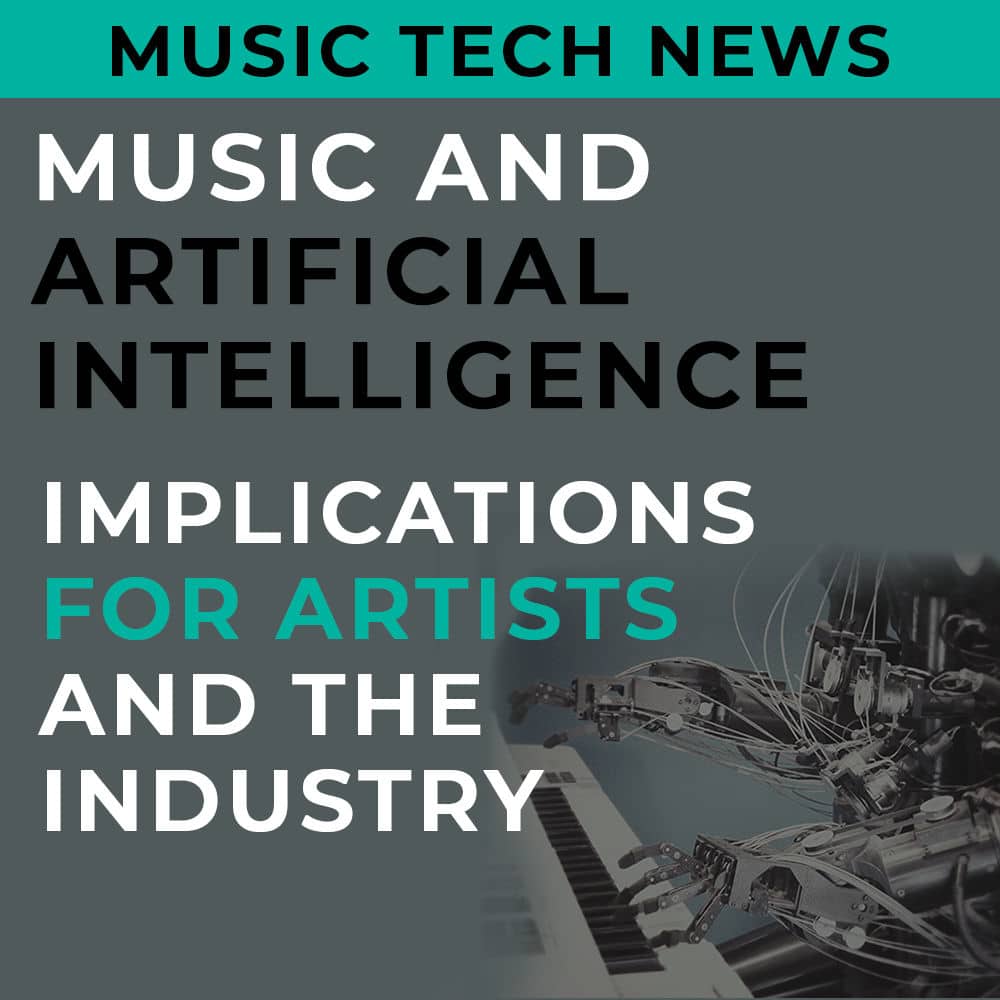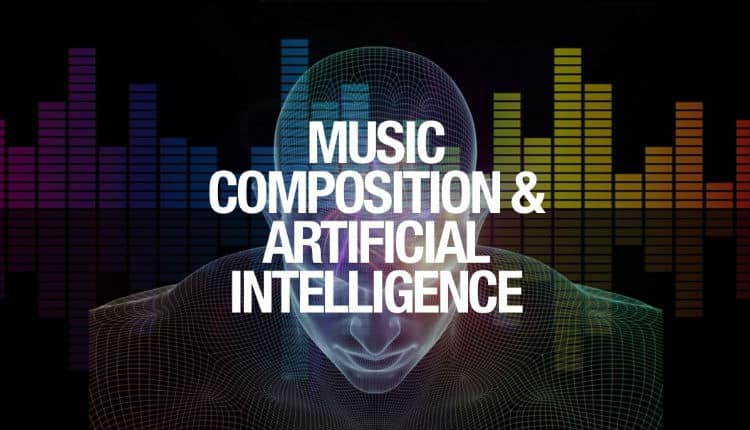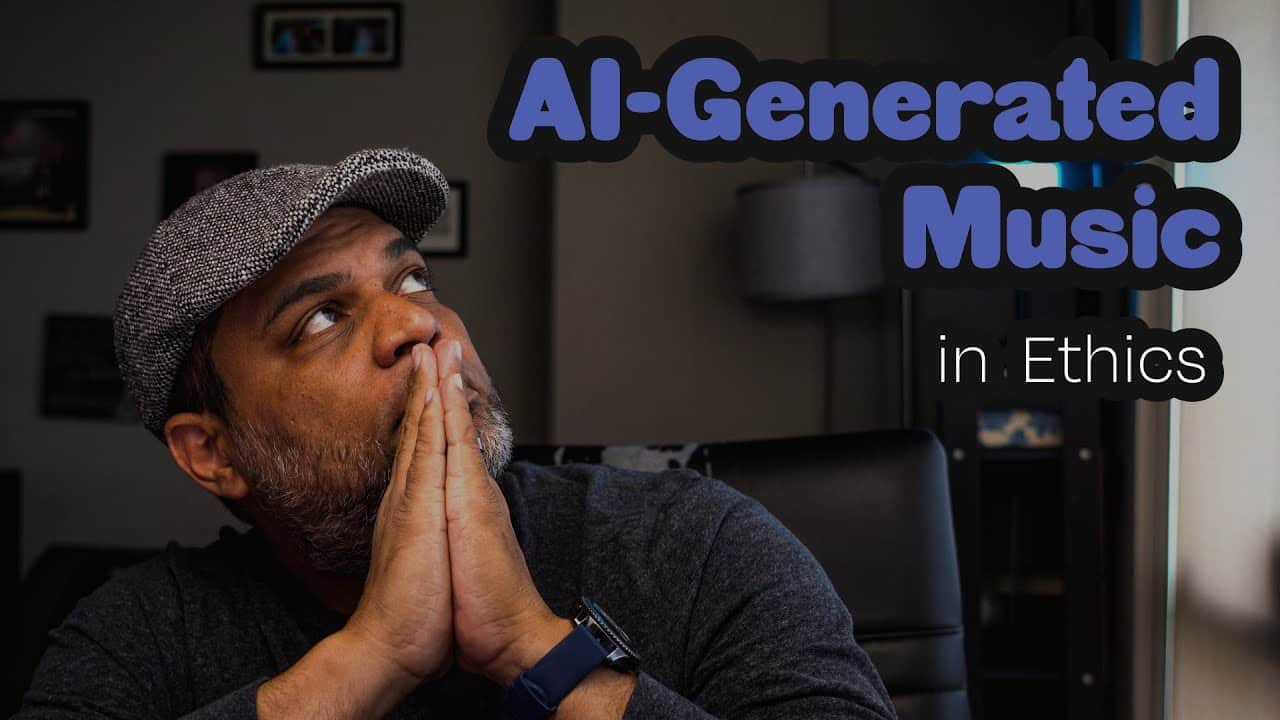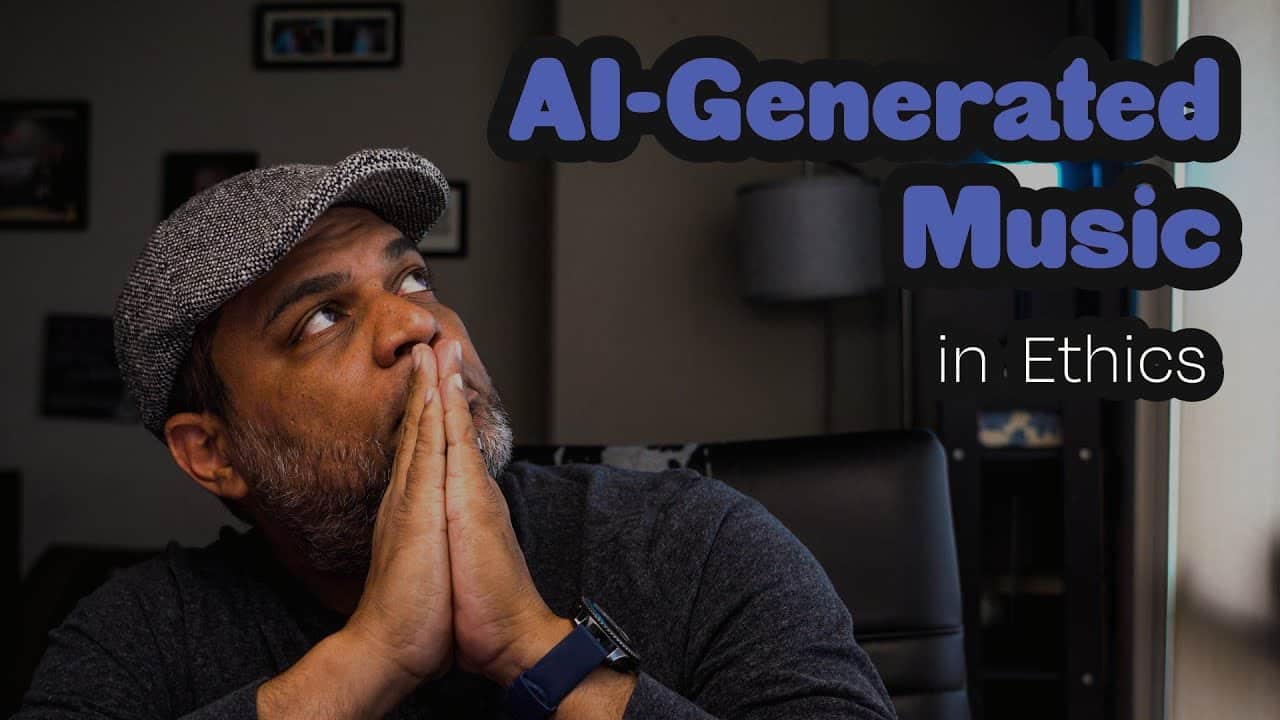Ethical considerations of using AI in music creation are rapidly becoming a central concern in the music industry. The rise of AI-powered tools capable of generating original musical compositions presents a complex web of legal, artistic, and societal challenges. This exploration delves into the multifaceted implications of this technological advancement, examining its impact on copyright law, artistic authenticity, bias in algorithms, and the future of musicians and the music industry itself.
From the thorny issue of copyright ownership for AI-generated music to the potential for algorithmic bias to perpetuate harmful stereotypes, the ethical landscape is far from straightforward. We’ll investigate how existing legal frameworks struggle to adapt to this new reality, examining potential solutions and exploring the arguments for and against AI-generated music’s status as “true art.” Further, we will consider the potential for both displacement and augmentation of human musicians in this evolving creative ecosystem.
Copyright and Ownership in AI-Generated Music
The burgeoning field of AI music generation presents significant legal challenges, particularly concerning copyright and ownership. Determining who holds the copyright to a piece of music created by an AI system is a complex issue with no easy answers, varying greatly depending on the level of human involvement in the creative process. This complexity stems from the inherent tension between traditional copyright law, designed for human authorship, and the novel realities of AI-generated works.
Legal Complexities Surrounding Copyright Ownership
Copyright law traditionally protects original works of authorship fixed in a tangible medium of expression. However, AI systems, lacking the sentience and intent of human creators, raise fundamental questions about authorship and originality. When human input is minimal, for example, simply selecting parameters within a generative AI tool, the question of human authorship becomes less clear. Conversely, when a human artist extensively guides the AI, providing significant creative direction and editing the output, the human’s contribution might be considered sufficient for copyright protection.
The line between these two scenarios is often blurry, leading to considerable legal uncertainty.
Examples of Legal Frameworks Addressing AI-Generated Music Copyright
Several jurisdictions are grappling with the implications of AI-generated music. The United States, for example, relies on the existing copyright framework, which requires human authorship. This means that copyright protection for AI-generated music typically hinges on the extent of human involvement. The European Union is also navigating these complexities, with ongoing discussions about updating its copyright directives to accommodate AI-generated works.
Some jurisdictions are exploring alternative models, such as granting copyright to the AI developer or the user, based on specific criteria related to the level of control and creative input. However, a universally accepted legal framework remains elusive.
Potential Disputes Between AI Developers, Users, and Copyright Holders of Training Data
The training data used to develop AI music generation systems often comprises copyrighted musical works. This raises concerns about potential copyright infringement. Disputes may arise between the AI developers, who utilize the data, the users who generate music with the AI, and the original copyright holders of the training data. The legal basis for these claims is complex and often depends on factors such as the nature of the training data use (fair use, transformative use), the level of similarity between the training data and the AI-generated output, and the specific terms of use associated with the AI system.
Comparison of Current Copyright Laws and Challenges Posed by AI Music Generation
| Legal Jurisdiction | Current Copyright Law | Challenges from AI | Proposed Solutions |
|---|---|---|---|
| United States | Requires human authorship; protects original works fixed in a tangible medium. | Difficulty determining authorship when AI generates music with minimal human input; potential infringement of copyrighted training data. | Clarification of “authorship” in the context of AI; development of specific legal frameworks for AI-generated works; expansion of fair use doctrines. |
| European Union | Similar to US, emphasizing human authorship; ongoing discussions about updating copyright directives. | Same as US; potential conflicts between AI developer, user, and copyright holders of training data. | Harmonization of EU copyright law to address AI; exploration of sui generis protection for AI-generated works. |
| United Kingdom | Follows similar principles to US and EU, emphasizing human creativity. | Uncertainty regarding ownership and licensing of AI-generated music; potential for disputes over the use of copyrighted training data. | Development of clearer guidelines on AI-generated copyright; potential for a new copyright regime specifically for AI-generated works. |
Authenticity and Artistic Expression in AI Music

The rise of AI in music creation presents a fascinating challenge to long-held notions of artistic authenticity and originality. While human composers imbue their work with personal experiences, emotions, and intentions, AI systems generate music based on algorithms and learned patterns from existing datasets. This raises crucial questions about the nature of artistic expression and the very definition of art itself.
The debate is not simply about whether AI can
create* music, but whether that music holds genuine artistic merit and can be considered “authentic” in the same way human-created music is.
The impact of AI-generated music on artistic authenticity is profound. Traditionally, originality in music has been associated with a unique creative vision, emotional depth, and the artist’s individual expression. AI, however, can produce novel musical combinations by manipulating and recombining existing musical elements. This raises the question: is originality solely about novelty, or does it require a conscious, human creative process?
The debate touches upon the very essence of what constitutes art – is it the process of creation, the outcome, or both?
Arguments for and Against AI Music as True Art, Ethical considerations of using AI in music creation
Arguments in favor of considering AI-generated music as true art often center on the capacity of AI to produce aesthetically pleasing and emotionally resonant pieces. Proponents highlight the potential for AI to explore new sonic territories and generate music that transcends human limitations. They argue that the criteria for evaluating art should be based on aesthetic merit, emotional impact, and innovation, regardless of the creator’s nature.
Conversely, arguments against classifying AI-generated music as true art emphasize the absence of human intentionality and emotional depth. Critics contend that AI, lacking subjective experience and consciousness, cannot truly express emotions or convey a personal artistic vision. They argue that the value of art lies in its ability to reflect the human condition, a capacity they believe AI currently lacks.
Hypothetical Scenario: Human vs. AI Composition
Consider a hypothetical scenario comparing a human-composed piece and an AI-composed piece, both in the style of a melancholic piano ballad. The human composer, drawing upon personal experiences of loss and grief, might incorporate specific melodic motifs and harmonic progressions that directly reflect these emotions. The piece’s structure and emotional arc would be carefully crafted to evoke a specific emotional journey in the listener.
In contrast, an AI-generated piece, trained on a vast dataset of melancholic piano ballads, might produce a technically proficient and emotionally evocative piece. However, its emotional depth would stem from statistical patterns and learned associations rather than personal experiences. The AI would lack the intentional narrative arc and personal expression present in the human composition. While both pieces might achieve a similar aesthetic effect, the underlying creative processes and intent differ significantly.
Criteria for Evaluating the Artistic Merit of AI-Generated Music
The evaluation of AI-generated music requires a shift in perspective. Instead of focusing solely on the origin of the music, we should concentrate on inherent artistic qualities. A set of criteria could include: aesthetic appeal (melodic invention, harmonic richness, rhythmic complexity), emotional impact (evocative power, resonance with listeners), originality (novelty of musical ideas, avoidance of clichés), technical proficiency (mastery of musical form and instrumentation), and overall coherence (unity and consistency of musical ideas).
These criteria, applied objectively, can provide a framework for evaluating the artistic merit of AI-generated music independent of its source.
Bias and Representation in AI Music Training Data

AI music generation systems, while offering exciting creative possibilities, inherit and potentially amplify biases present in their training data. The datasets used to train these systems often lack diversity in terms of genre, cultural origin, and representation of musicians from various backgrounds, leading to skewed and limited outputs. Understanding these biases and their impact is crucial for responsible development and deployment of AI music technology.The impact of biased training data on AI music generation manifests in several ways.
For instance, a dataset predominantly featuring Western classical music might result in systems that primarily generate music in that style, neglecting or poorly representing other genres like traditional African music, Indian classical music, or Latin American folk music. Similarly, an imbalance in the representation of male and female composers in the training data could lead to a disproportionate generation of music attributed to, or stylistically reminiscent of, male composers.
This not only limits the creative potential of the technology but also reinforces existing power imbalances within the music industry.
Potential Biases in AI Music Datasets and Their Impact
Several factors contribute to bias in AI music datasets. One significant factor is the historical dominance of certain genres and styles in music archives and digital libraries. Western classical music, for example, enjoys extensive documentation and digital availability compared to many non-Western musical traditions. This overrepresentation leads to AI systems that are more proficient in generating Western-sounding music while struggling with others.
Another source of bias stems from the inherent biases within the music industry itself, which historically has underrepresented women, people of color, and musicians from marginalized communities. This translates into datasets that reflect these biases, leading to AI systems that perpetuate them. A lack of metadata, including information on the composer’s background and the cultural context of the music, further exacerbates the problem, making it difficult to identify and correct biases within the datasets.
For example, a system trained on a dataset lacking information on the cultural origins of different musical styles might struggle to generate authentic representations of those styles, leading to homogenized and potentially inaccurate outputs.
Genre and Cultural Style Representation in AI-Generated Music
The representation of different musical genres and cultural styles in AI-generated music is often uneven. Current AI models tend to excel at replicating popular Western genres like pop, rock, and jazz, while their ability to generate authentic music from less represented genres is significantly limited. This disparity is directly linked to the composition of the training datasets. Datasets heavily weighted towards Western music lead to systems that struggle to capture the nuances and complexities of non-Western musical traditions.
The stylistic features that define specific cultures, such as rhythmic patterns, melodic contours, and instrumental choices, might be poorly represented or entirely absent in the AI’s output, leading to a homogenization of musical styles and a loss of cultural diversity. This lack of representation not only restricts the creative potential of AI but also perpetuates cultural biases and contributes to the marginalization of certain musical traditions.
For instance, an AI trained primarily on Western pop music might struggle to accurately generate music in the style of traditional Japanese Gagaku or Indian Carnatic music, resulting in diluted or inaccurate representations.
Ethical Implications of Perpetuating Biases in AI Music Creation
The perpetuation and amplification of existing biases through AI music creation raise significant ethical concerns. The lack of representation of diverse musical genres and cultural styles can lead to a homogenization of musical expression, eroding cultural diversity and limiting the range of musical experiences available. Moreover, biased AI systems can reinforce existing power imbalances within the music industry, further marginalizing underrepresented communities.
The commercialization of such biased AI systems could also lead to the appropriation and misrepresentation of cultural heritage, potentially causing offense and undermining cultural authenticity. For example, an AI system generating music in the style of a specific cultural tradition without proper understanding or respect for its cultural context could be considered cultural appropriation.
Mitigating Bias in AI Music Generation
Mitigating bias in AI music generation requires a multifaceted approach focusing on both dataset curation and algorithm design. Dataset curation involves actively seeking out and incorporating diverse musical data from a wide range of genres and cultures. This includes identifying and addressing imbalances in the representation of different composers, musicians, and musical styles. Furthermore, enriching datasets with comprehensive metadata, including information on the cultural context and historical background of the music, can help AI systems learn to generate more authentic and culturally sensitive outputs.
Algorithm design plays a crucial role in mitigating bias. Techniques like data augmentation, which involves artificially expanding the dataset by creating variations of existing musical pieces, can help address imbalances in the representation of different genres and styles. Furthermore, incorporating fairness-aware algorithms that explicitly account for and mitigate biases during the training process can lead to more equitable and inclusive AI music generation systems.
These strategies aim to create a more balanced and representative representation of music across cultures and styles.
The Impact of AI Music on Musicians and the Music Industry
The rise of AI in music creation presents a complex and multifaceted challenge to the established music industry and the individuals who comprise it. The potential for both significant disruption and innovative enhancement exists, demanding careful consideration of the economic, social, and creative implications. Understanding the potential displacement of human musicians, the opportunities for creative augmentation, and strategies for adaptation is crucial for navigating this evolving landscape.The potential for AI to displace human musicians is a significant concern.
AI systems are capable of generating increasingly sophisticated musical compositions, potentially reducing the demand for human composers, performers, and producers, particularly in genres reliant on formulaic structures or readily reproducible styles. This displacement could lead to job losses and a decrease in income for many working musicians. However, it’s crucial to acknowledge that AI, at its current stage, lacks the nuanced emotional depth, unique creative vision, and improvisational capabilities often associated with human artistry.
AI as a Tool for Augmenting Human Creativity
AI can serve as a powerful tool to augment, rather than replace, human musical creativity. For instance, AI tools can assist composers by generating variations on a theme, suggesting harmonic progressions, or creating instrumental arrangements, freeing up the human composer to focus on higher-level creative decisions and artistic expression. AI-powered virtual instruments can offer musicians access to a vast range of sounds and textures, expanding their sonic palette and facilitating experimentation.
AI can also personalize music experiences, adapting compositions to individual preferences or even generating bespoke soundtracks tailored to specific activities or emotional states. The use of AI in music education is also growing, providing personalized feedback and support to aspiring musicians.
Strategies for Musicians to Adapt to the AI Revolution
Musicians need to adapt to thrive in this new environment. This adaptation requires a multi-pronged approach focusing on skill diversification, embracing new technologies, and advocating for policies that support human artists. Musicians can enhance their skills by mastering AI-assisted music production tools, learning to program AI systems for their specific needs, or focusing on uniquely human aspects of musical performance, such as improvisation, emotional expression, and live interaction with audiences.
Furthermore, focusing on niche genres, personalized experiences, and collaborative projects that integrate AI tools while showcasing human creativity could be a powerful strategy. Finally, advocating for fair compensation models and copyright protections for human-created music is crucial in ensuring the continued viability of the musical profession.
Hypothetical Scenario: Economic Impact of Widespread AI Music Generation
Imagine a future where AI music generation becomes commonplace. A hypothetical scenario could unfold as follows: Independent musicians, heavily reliant on streaming revenue, might experience a significant drop in income as AI-generated music floods the market, saturating platforms with inexpensive or free content. Major record labels, initially benefiting from reduced production costs, might eventually face challenges due to the difficulty in controlling and monetizing AI-generated music and the potential loss of artist exclusivity.
Music publishers, responsible for copyright and licensing, could face complexities in defining ownership and determining royalty payments for AI-generated works. This scenario highlights the need for proactive strategies, including new business models, regulatory frameworks, and ethical guidelines, to ensure a sustainable and equitable future for all stakeholders in the music industry.
Accessibility and Inclusivity in AI Music Creation Tools: Ethical Considerations Of Using AI In Music Creation

AI music creation tools hold the potential to revolutionize music production, democratizing access and empowering individuals previously excluded from the creative process. By lowering the barrier to entry, these tools can foster a more inclusive and diverse musical landscape. However, realizing this potential requires careful consideration of ethical implications and proactive strategies to ensure equitable access for all.AI music creation tools can significantly democratize music production by providing intuitive interfaces and automated functionalities that bypass the need for extensive musical training.
Individuals with limited musical knowledge can utilize these tools to compose, arrange, and produce music, overcoming traditional hurdles such as learning complex musical notation or mastering intricate recording techniques. This accessibility fosters creativity and self-expression among individuals who might otherwise lack the means or opportunity to engage in music creation.
Equitable Access to AI Music Creation Tools
Ensuring equitable access to AI music creation tools requires addressing critical factors such as cost, technical expertise, and digital literacy. High subscription fees or the need for expensive hardware can create significant barriers for individuals from lower socioeconomic backgrounds. Similarly, a lack of technical expertise or digital literacy can prevent many from effectively utilizing these tools, even if they are affordable.
Strategies must be developed to bridge these gaps, including offering free or subsidized access to specific communities, providing comprehensive training programs, and designing user-friendly interfaces that require minimal technical skills.
Inclusive Design Strategies for AI Music Creation Tools
Inclusive design principles should guide the development of AI music creation tools to cater to diverse needs and abilities. This includes features like customizable interfaces adaptable to various levels of visual and auditory acuity, support for multiple languages and input methods (such as voice control or alternative input devices), and the ability to create music in various genres and styles catering to diverse cultural preferences.
For example, a tool could allow users to input musical ideas using simple spoken commands, visual cues, or even through physical gestures, accommodating individuals with different learning styles and physical limitations. Furthermore, incorporating diverse musical traditions and instruments into the AI’s training data is crucial for creating tools that are truly representative and inclusive.
Barriers to Accessibility and Proposed Solutions
Several barriers can hinder accessibility to AI music creation tools. Below is a list of potential barriers and proposed solutions:
- High Cost: Offer free or low-cost versions of the software, subsidized access for marginalized communities, and explore open-source development models.
- Technical Expertise Required: Develop user-friendly interfaces with intuitive workflows, provide comprehensive tutorials and support documentation, and offer online training programs.
- Digital Literacy Barriers: Provide basic digital literacy training alongside the software, offer multilingual support, and incorporate accessible design principles.
- Lack of Inclusivity in AI Training Data: Ensure diverse musical genres, instruments, and cultural styles are represented in the AI’s training data to avoid biases and promote inclusivity.
- Accessibility for People with Disabilities: Design interfaces compatible with assistive technologies, such as screen readers and alternative input devices, and provide customizable options for users with visual or auditory impairments.
Final Conclusion
The integration of AI into music creation is undeniably transformative, presenting both immense opportunities and significant ethical dilemmas. Navigating this complex terrain requires a nuanced understanding of the legal, artistic, and societal implications. While AI offers exciting possibilities for democratizing music production and enhancing human creativity, careful consideration of copyright, bias mitigation, and the potential impact on human musicians is crucial to ensure a future where technology serves art ethically and responsibly.
The ongoing dialogue surrounding these issues is vital to shaping a sustainable and equitable future for music in the age of artificial intelligence.

